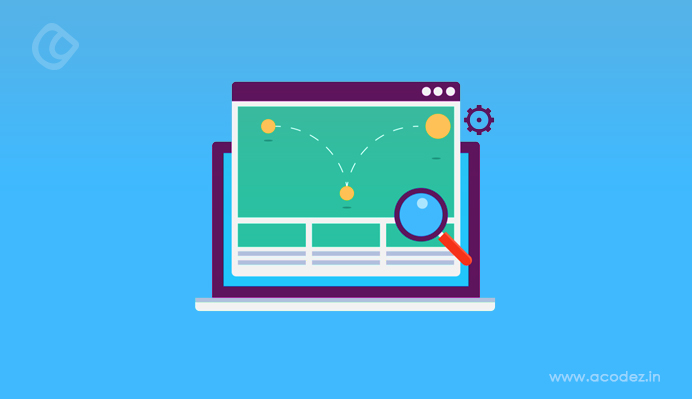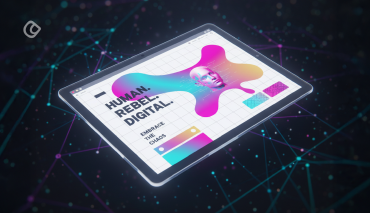Exit rate and bounce rate are useful metrics for telling you how well your content strategy is working at any given time. But what are they?
What is an Exit Rate?
An exit rate or bounce rate is the percentage of website visitors who leave a website from any given page. For example, if 100 visitors land on your about us page and 30 visitors click away to another site without looking at any other pages on your site, then your exit rate for that page would be 30%. You could also look at this as the percentage of people who enter a site but don’t engage with it – probably because they didn’t find what they were looking for. It’s not always bad to have a high exit rate – if you have a low number of visitors per month (or even per day), then it can mean that these visitors are more engaged than usual.
But how do you improve your website’s content strategy? There are two main ways to do this. Firstly, you should be constantly testing different types of content to see what works best for your site;
Secondly, you can look at your exit rate and try to understand why visitors are leaving from certain pages – give them what they want! If a high number of people are exiting from a page on your site, it might mean that the information isn’t useful enough, or perhaps it is too salesy in nature. It could even mean they have been there long enough and just need a nudge in the right direction. This is where persuasive copywriting comes into play.
Your exit rate can also tell you more about how you’re doing overtime – trends in your exit rates could be an indication of how people are engaging with the site. If you’ve improved your content strategy and this doesn’t change, then perhaps there is another factor at play here – like lower traffic to the site overall.
Traffic isn’t always everything – it’s important to know what exactly trends in your exit rate mean for your site so that you can improve content strategies in places where they’re needed most.
What is Bounce Rate?
Bounces take place when website visitors click onto a website and then “bounce” straight back off again without further engagement. The term was originally derived from when someone bounced a ball; not throwing it but just letting it hit the ground and bounce away.
A high bounce rate often indicates that your content strategy is not strong enough. It can mean that people are bouncing straight back off the site because they’re finding it difficult to navigate, too salesy or they’re just not engaged by what you’re offering (this could be down to website copy, images, or the general style of the site).
There’s no quick fix for getting rid of a high bounce rate; if someone doesn’t like your site then there’s not much you can do to persuade them otherwise. You have to look at your analytics and see where visitors are going. If you see a significant number of people leaving from one page in particular, then this might be an indication that you need to improve its copy. The same goes for images – if they’re not helping to tell the right story, then you might need to change them for better ones.
Always look at your bounce rate over time rather than just taking a snapshot of it in one day. You should be looking at trends in this figure so that you can improve content strategy where necessary. For example, if you see that people are bouncing back off your site very soon after arriving (after only 1 second), then it’s likely they didn’t even get to see your page properly.
If someone doesn’t stay long enough on your website to read the copy or view other pages, then why would they keep reading? It could be worth their while coming up with different types of content that entices visitors to engage further and really take part in your site.
Once you implement these changes, you should see your bounce rate go down and stay down. This is the general trend for sustainable improvements in this figure over time. But remember not to be disheartened if there are blips along the way – sometimes it takes people a little while to adjust to changes that you make.
How to Find Your Website’s Exit Rate and Bounce Rate
Google Analytics has excellent reports which tell you precisely what your exit rates are for various pages of your site. It also dives deeper by telling you where visitors came from, how long they stayed on your site, why they left (like through clicking onto another website), etc.
By looking at this data alongside things like relevant keywords, you can find out what’s triggering people to bounce back off your site or leave after just seconds. This insight into your analytics is invaluable.
Once you know where the problems are, you need to work on improving your content strategy so that these click-offs don’t happen anymore.
What Should Your Average Bounce Rate and Exit Rate Be?
There’s no fixed answer to this. Ideally, your bounce rate would be as low as possible and you’d have a very high number of people engaging with your site after they’ve first visited. However, there will always be some people who bounce back off and never return (and that’s okay).
If you’re checking your analytics daily, then expect to see your figures fluctuate throughout the day and the week. If it increases over time, then you need to take action – but remember to look at traffic patterns so that you can pinpoint why visitors are leaving from certain points on your website.
To summarise:
- Exit Rate = Bounce Rate + What You Do In Between Visits To Your Site + Leakage Rate – Engagement Rate
- If your bounce rate is higher than 50%, then there’s room for improvement in your content strategy. You’ll need to find out what the specific reasons are that people are leaving from certain pages, and then you should build new content around them so that you can engage more visitors. Do this over time to see positive results!
- Average exit rate should be between 1% (if it’s lower, then you might want to re-evaluate some of the key information on these pages) and 3% – but look closely at your analytics to see how visits vary throughout the day/week for each page.
- Average bounce rate should be as low as possible; under 30%. Look closely at where people are leaving on your website and use the insights to improve your content strategy over time. This will cause your bounce rate to decrease, but remember that it might fluctuate due to factors like seasonality or traffic changes.
Which Metric Is More Important?
We’ve discussed bounce rate and exit rates separately for a reason: they both have their own individual importance. For example, if your exit rate is very low (ie the vast majority of people stay on your site), then this could be good – but if only one person stays after visiting, it doesn’t really show much progress.
Similarly, you might not want to work too hard improving your content strategy if visitors are bouncing back off as soon as they get there (over 50%) – because such visitors probably won’t engage with any new content anyway.
Really, each metric should be considered against the other types of data that Google Analytics can tell you about where visitor engagement is concerned; like time spent on page and pages per visit:
- If your bounce rate is low but the average time spent on a page is low, then you need to work on making pages more engaging – perhaps by improving load times.
- High exit rates are good if the site traffic isn’t massive (and therefore a small number of people bouncing back off doesn’t really matter) and/or visitor engagement is high (meaning that there’s demand for your product/service).
It basically boils down to this:
Bounce Rate = Efficiency of Content Strategy.
Exit Rate = Success Of Content Strategy.
What You Can Do To Improve Your Content Strategy
The key thing about improving your content strategy is to constantly test out new ideas. Keep track of what works well so that you can replicate it elsewhere in the future, but don’t be afraid to try something new.
For example, if you’ve identified any particular keywords that are driving traffic to your site, then you should create more content around them – even if this means creating pages with very little original text. You’ll want to have a couple of resource pages full of links so that anyone who clicks on one is taken straight to the relevant source page/article, rather than anything else.
Just remember that although exit rate and bounce rate are useful metrics for telling you how well your content strategy is working at any given time, their impact will differ depending on other data points.
That’s why it’s important to track everything in conjunction with each other – particularly when changes are made to the website (which might affect things like Google Analytics tracking).
So, if something doesn’t seem to be working as it should after a change, then check that the content strategy hasn’t been affected before you throw in the towel completely. You could also try testing out some new ideas to see what happens!
Conclusion
There are other ways to measure website success, but bounce rate and exit rates should be used in conjunction with all other types of analytics data (like time spent on the page), along with your own observations.
By closely looking at what people do both when they first arrive at the site, as well as over the course of their stay, then you’ll soon figure out which metrics are most useful for you – and which ones matter less than others.
Acodez is a multi-award-winning web development company in India with 10+ years of experience and clients across 80+ countries. Acodez is also one of the best digital marketing agencies in India We are also a leading digital marketing agency in India, providing SEO, SMM, SEM and Inbound marketing service at affordable prices. For further information, please contact us!
Looking for a good team
for your next project?
Contact us and we'll give you a preliminary free consultation
on the web & mobile strategy that'd suit your needs best.









